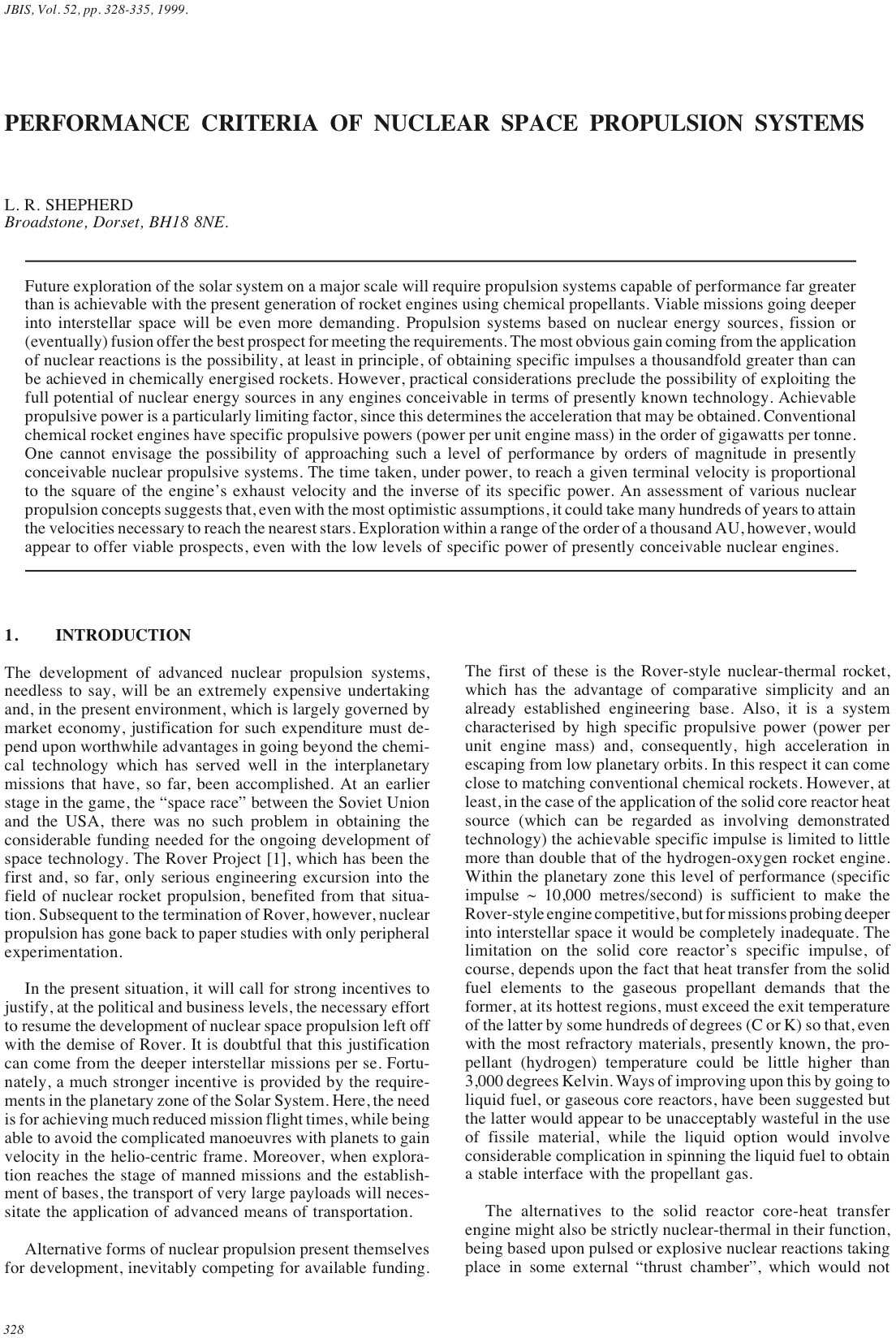Performance Criteria of Nuclear Space Propulsion Systems
£5.00
L.R. Shepherd (1999), JBIS, 52, 328-335
Refcode: 1999.52.328
Abstract:
Future exploration of the solar system on a major scale will require propulsion systems capable of performance far greater than is achievable with the present generation of rocket engines using chemical propellants. Viable missions going deeper into interstellar space will be even more demanding. Propulsion systems based on nuclear energy sources, fission or (eventually) fusion offer the best prospect for meeting the requirements. The most obvious gain coming from the application of nuclear reactions is the possibility, at least in principle, of obtaining specific impulses a thousandfold greater than can be achieved in chemically energised rockets. However, practical considerations preclude the possibility of exploiting the full potential of nuclear energy sources in any engines conceivable in terms of presently known technology. Achievable propulsive power is a particularly limiting factor, since this determines the acceleration that may be obtained. Conventional chemical rocket engines have specific propulsive powers (power per unit engine mass) in the order of gigawatts per tonne. One cannot envisage the possibility of approaching such a level of performance by orders of magnitude in presently conceivable nuclear propulsive systems. The time taken, under power, to reach a given terminal velocity is proportional to the square of the engine’s exhaust velocity and the inverse of its specific power. An assessment of various nuclear propulsion concepts suggests that, even with the most optimistic assumptions, it could take many hundreds of years to attain the velocities necessary to reach the nearest stars. Exploration within a range of the order of a thousand AU, however, would appear to offer viable prospects, even with the low levels of specific power of presently conceivable nuclear engines.





